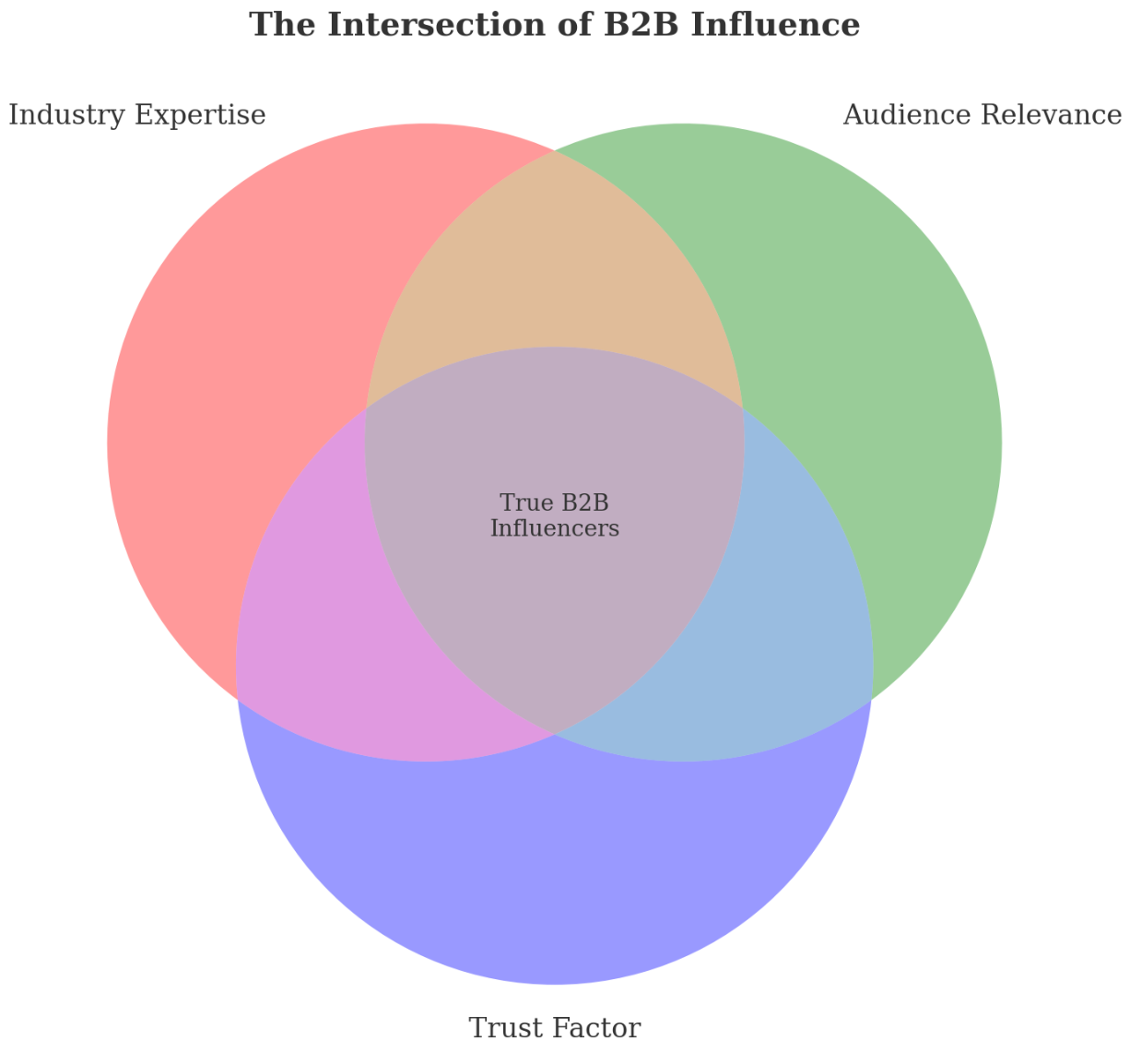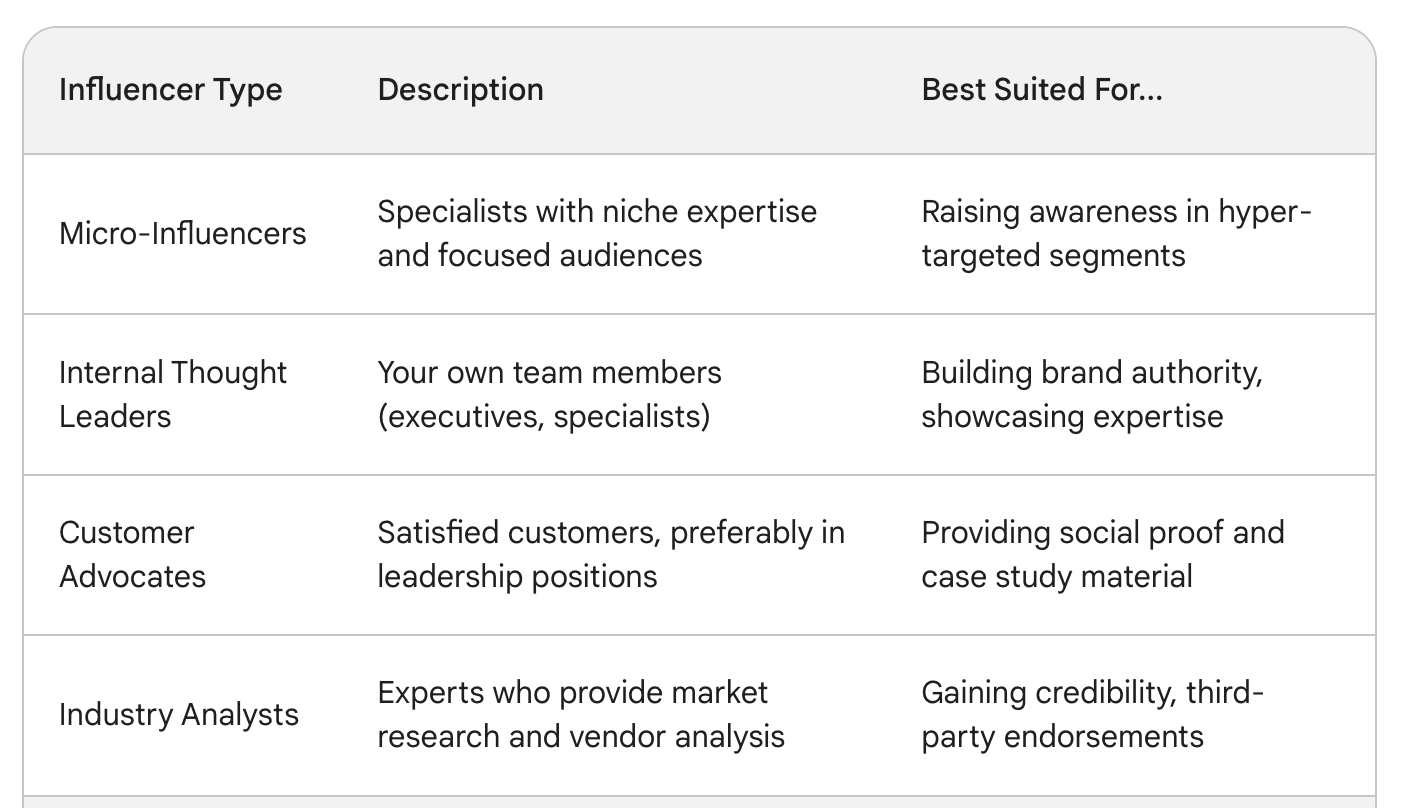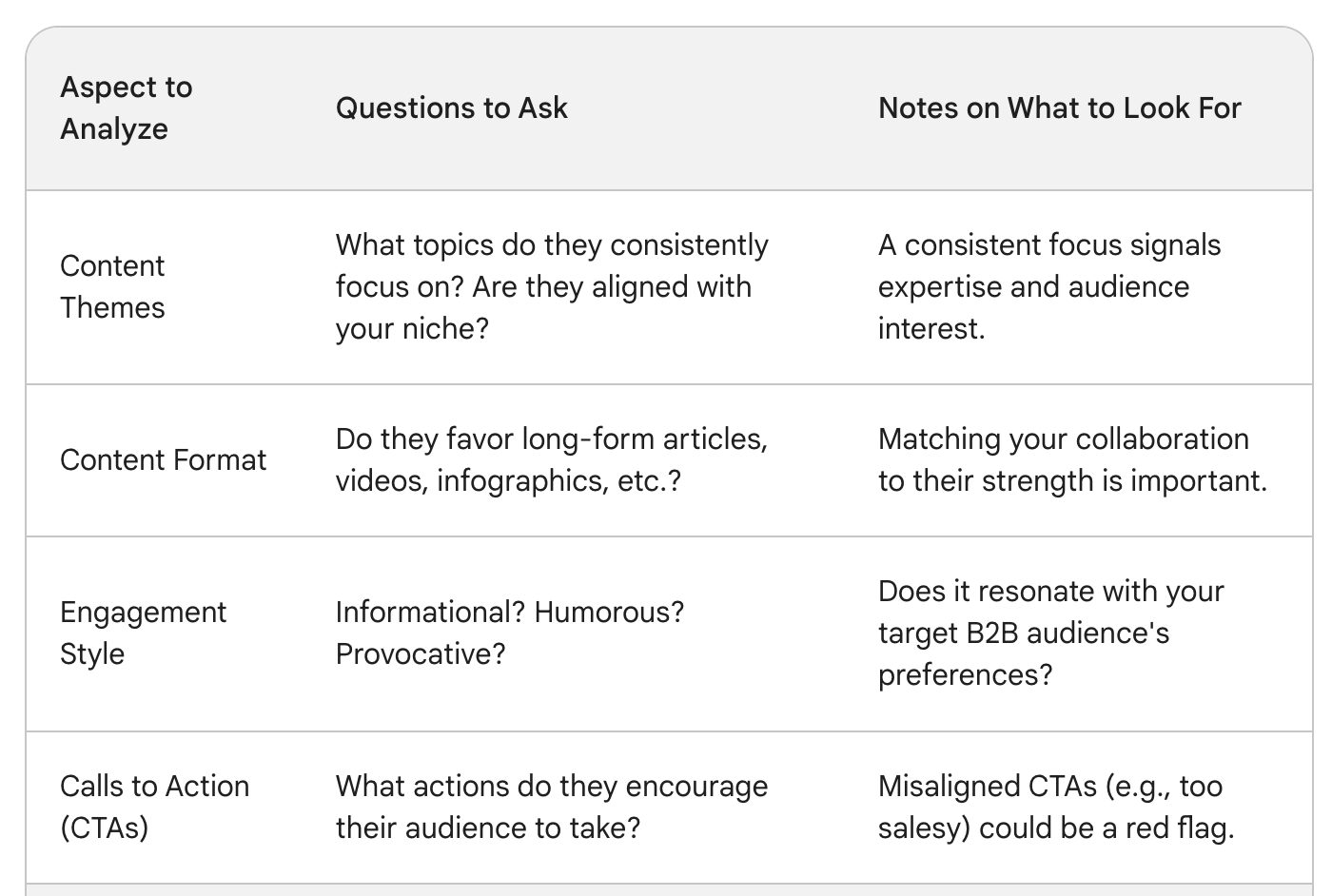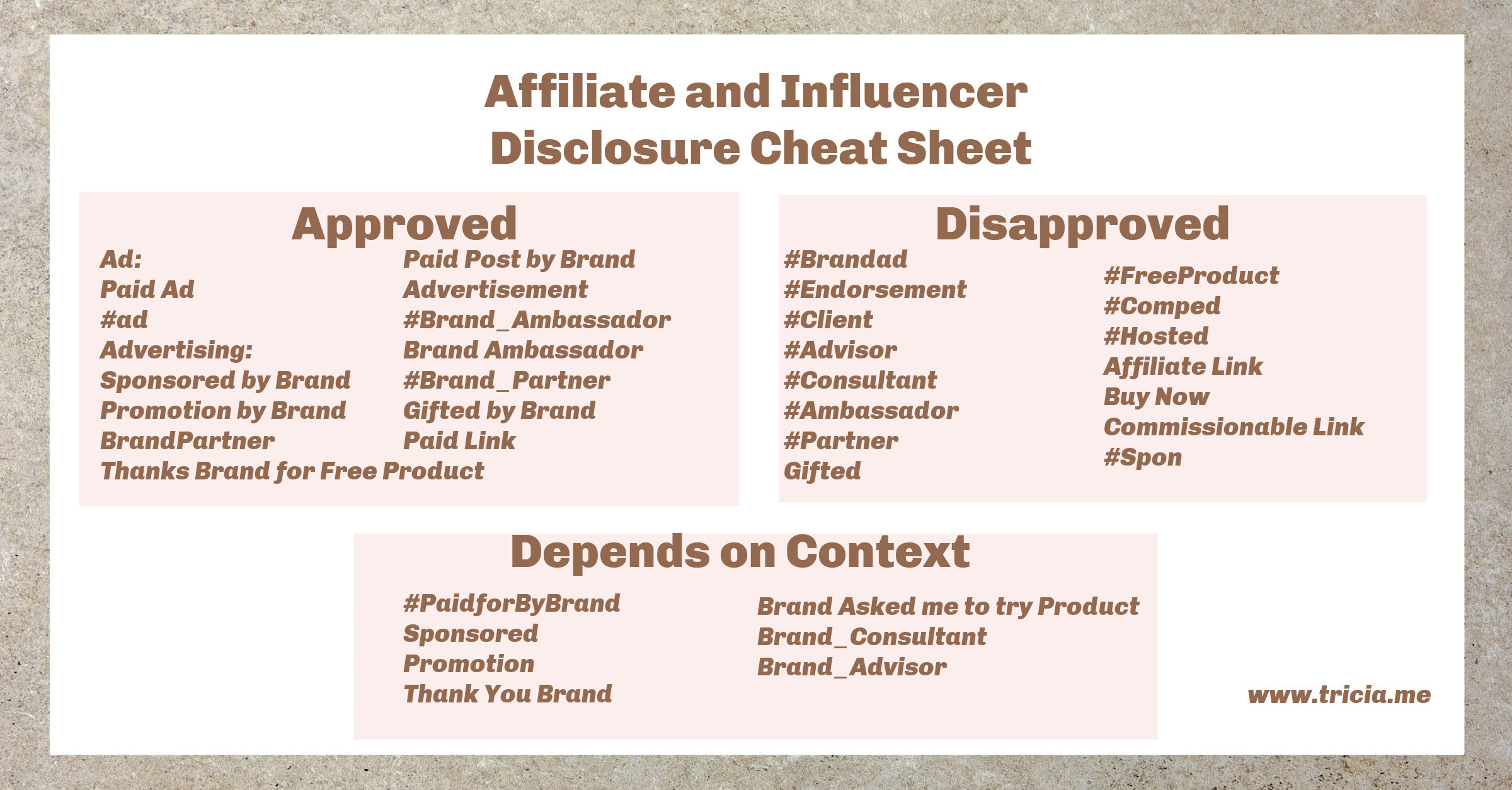If I have to read one more article promising me 'viral reach' with the hottest TikTok-turned-B2B-influencer, I might just lose it. Look, we all want results from influencer marketing, but let's be real, the B2B world plays by different rules. It's time to ditch the surface-level stuff and get strategic.
Let's face it, the cliché tactics just won't cut it. B2B professionals are more discerning; they seek depth, expertise, and authenticity. So, how do we as SaaS marketers (and those of us in the wider B2B world) foster these deep, meaningful connections with influencers and drive results that matter?
Beyond Vanity Metrics: The Shift Towards Substance
Too often, influencer marketing gets reduced to chasing surface-level numbers – follower counts, likes, and shares. While those metrics have a place, they aren't the be-all and end-all in the realm of B2B influence.

Remember, within our professional audience, it's not just about who has the most extensive network, but rather who holds sway over decision-makers, who genuinely shapes opinions, and who drives long-term engagement with relevant communities. This is where trust and thought leadership become paramount.
The Nuances of Identifying True B2B Influencers


Finding the right influencers takes finesse. Here's where you need to step away from the traditional “influencer marketing platforms” and think strategically:
Micro-Influencers: Don't underestimate the power of niche experts. Sometimes a highly engaged audience of 5,000 targeted professionals is far more valuable than a generic one of a hundred-thousand. Seek out those voices with deep industry knowledge.
Internal Thought Leaders: Have you considered your own team members? Your executives, product specialists, and customer success rockstars likely have valuable insights to share and an established following within your industry. Empower them as micro-influencers.
Customer Advocates: Happy customers, particularly those in leadership positions, can be incredible brand advocates. Look at them like 'nano-influencers' who already have the trust of your target audience.
Industry Analysts/Consultants: Cultivate relationships with industry analysts who have the ear of decision-makers in your niche. Getting their endorsement of your solution carries enormous weight.
Pro-Tip: Social listening tools aren't just for tracking brand mentions. Use them to identify conversations happening within your industry, spot potential influencers based on engagement, and analyze sentiment towards competitors.
From Pay-to-Play to Authentic Engagement

Gone are the days when you could simply “pay” an influencer to promote your product. B2B audiences demand credibility, and building it requires a more nuanced relationship-building approach.

Focus on these aspects:
Personalized Outreach: Take the time to understand each influencer's interests, content style, and audience. Tailor your outreach to show you 'get' what they do, avoiding generic mass-requests.
Mutual Value Proposition: Think beyond simple monetary compensation. Could you offer access to exclusive data, co-create thought leadership content, or invite them to speak at your webinars? Get creative in providing genuine value.
Building Relationships: Invest in genuine long-term relationships. Engage with their content, provide feedback, and show interest in them as industry professionals. Trust is built slowly.
Example: Pipedrive, a CRM SaaS company, runs a fantastic initiative called “Sales Pipeline Radio.” Instead of just paying top sales experts for one-off mentions, they created an entire podcast platform where these influencers can share their valuable insights, thus positioning Pipedrive as a knowledge hub.
Collaboration Strategies That Drive Results

Now that you've built solid foundations, let's get into the exciting part - designing high-impact collaborations. Remember, variety is your friend!
| Collaboration Type | Description & Considerations |
|---|---|
| Content Co-Creation | Invite them to guest blog, co-author whitepapers or industry reports. Choose formats best suited to their expertise. |
| Webinars & Podcasts | Tap into their existing audiences with joint webinars or podcast appearances, offering valuable insights together. |
| Community AMAs | Host AMAs (Ask Me Anything) sessions within your online communities and invite relevant influencers as guests. |
| Virtual Roundtables | Gather a small group of influencers for focused roundtable discussions, later repurpose the insights into content. |
| Product Feedback/Reviews | Provide early access to features or offer in-depth trials in return for honest, unbiased reviews and testimonials. |
Remember: Give influencers creative freedom within agreed-upon parameters. Their authenticity is what will resonate with your target audience.
Transparency & FTC Disclosures: Staying on the Right Side
This aspect is frequently overlooked in B2B influencer collaborations, but it's crucial. Professional audiences expect transparency, and more importantly, the FTC (and other governing bodies globally) have clear guidelines regarding influencer marketing disclosures.

Here's where we need to be extra vigilant:
Clear Disclosure: Any collaboration must transparently disclose its nature. Whether it's a sponsored post, a product review, or an affiliate link, make sure both the influencer and your brand adhere to regulations.
Educate Your Influencers: Not all influencers are familiar with the nuances of FTC guidelines. Provide them with clear instructions on proper disclosure language and placement.
Beyond the Hashtag: Simple hashtags like #sponsored or #ad might not be sufficient in the B2B context. Encourage influencers to include a brief verbal mention in videos or a clear textual disclosure at the beginning of articles.
Example: Gong, a revenue intelligence platform, excels at this. Their influencer content is always clearly labeled as “sponsored,” and often includes additional disclaimers about the influencer receiving compensation. This builds trust with their professional audience.
Measuring the True Impact of Influence
This is where many B2B marketers falter. It's tempting to measure success purely through reach metrics or immediate lead generation. However, authentic B2B influencer collaborations play the long game.

Focus on the metrics that matter.
Brand Sentiment Analysis: Employ tools to track changes in brand perception within your industry. Do conversations surrounding your product/company become more positive after working with influencers?
Referral Traffic: Look for increases in website traffic specifically from influencers' channels (social, blogs, newsletters). Set up UTM parameters for accurate tracking.
Content Engagement: Beyond likes, analyze the quality of comments, shares, and discussions triggered by influencer-created content. Are they sparking thoughtful conversations?
Pipeline Influence: Use your marketing automation to track leads who first engage with your brand through influencer touchpoints. This might require some complex setup but it gives a clearer view of their long-term impact.
Pro-Tip: Don't just measure the results of individual campaigns. Track the overall effectiveness of your B2B influencer program over time. Look for trends, understand what works best, and continuously refine your strategy.
The Ethical Imperative
As marketers, we have a responsibility to use influencer marketing in an ethical manner that adds genuine value to our target audience. A few key reminders on this front:
- Align Values: Work with influencers who share your company's core values and resonate with its mission. Incompatibility ultimately undermines credibility.
- Respect Audience Privacy: Be mindful of data collection practices, especially if collaborating on content that involves lead capture forms.
- Avoid Deceptive Practices: Don't ask influencers to make exaggerated claims or promote your product in a way that feels inauthentic.
Parting Thoughts
Building impactful B2B influencer collaborations requires a shift in mindset. It's about nurturing genuine relationships, fostering thought leadership, and measuring success based on long-term engagement and brand perception.
As this space continues to evolve, the savviest B2B marketers will be those who not only understand its technical aspects but also embrace the importance of authenticity, transparency, and the ethical application of influence.
FAQ
1. My target audience is very niche. Are micro-influencers still a viable option for me?
Absolutely! Micro-influencers can be incredibly valuable for brands with a highly specific target audience. While they might have smaller follower counts than big names, their audience tends to be incredibly engaged due to their deep expertise within the niche. This focused reach can often be far more powerful than broad, generic exposure.
2. How do I approach potential B2B influencers without coming across as overly sales-focused?
Focus on building a genuine relationship first. Start by engaging with their content thoughtfully – share your insights, ask questions, and offer value even before bringing up a potential collaboration. Show that you understand their expertise and appreciate their contributions to the industry.
3. Aside from monetary compensation, what are some creative ways to provide value to influencers?
Think about what might be truly beneficial to them:
- Exclusive Access: Offer them early access to new product features, data, or industry research.
- Visibility: Feature them on your company's blog, newsletter, or social channels.
- Networking: Organize introductions to other relevant individuals within your network.
- Knowledge-Sharing: Co-create in-depth thought leadership content or invite them to speak on your webinars.
4. How do you balance creative freedom for influencers with maintaining brand consistency?
The key here is setting clear expectations upfront. Create a collaboration brief that outlines your campaign goals, key messaging, and any necessary guidelines (e.g., brand voice). However, leave room for the influencer to add their own style and perspective. The more you trust their expertise, the more genuine the content will feel.
5. It seems like the FTC is getting stricter with influencer disclosures. What should I be most mindful of in the B2B world?
Transparency is crucial for B2B audiences. Avoid just relying on hashtags like #sponsored. Encourage your influencers to include a brief verbal disclosure at the beginning of videos, or a clear written statement near the top of articles or social posts. When in doubt, err on the side of being overly clear about the nature of the collaboration.
6. We've done a few influencer campaigns but found it hard to track tangible ROI. Any tips?
Move beyond surface-level metrics like impressions and focus on indicators that tie back to your business goals. Use UTM tracking on all influencer-driven links to understand their contribution to lead generation, track changes in brand sentiment using social listening tools, and if possible, monitor how many leads influenced by your campaign move through your sales pipeline.
7. How can I leverage my own employees as B2B micro-influencers?
Start by identifying team members who are active on relevant social platforms and have a genuine interest in sharing their industry knowledge. Provide them with training on social media best practices and content creation. Encourage them to share their insights in blog posts, on LinkedIn, or even by participating in relevant industry forums.
8. What's one common mistake you see B2B companies make with influencer marketing?
Treating it as a transactional, one-off endeavor. The most impactful B2B influencer collaborations are built on long-term relationships. Invest time in nurturing these connections even outside of specific campaigns. This leads to greater trust and more authentic content.
9. Are there any specific tools you recommend for B2B influencer discovery and tracking?
It depends on your budget and goals. Here are a few categories to explore:
- Social Listening Tools: (Mention, Brandwatch, etc.) help you track industry conversations and identify potential influencers organically.
- Influencer Marketplaces: (Grin, Traackr, etc.) can be useful but make sure to do your own vetting to ensure the influencer aligns with your B2B audience.
- Marketing Analytics: Your marketing automation platform should be where you track campaign influence on leads and pipeline.
10. I'm feeling overwhelmed! Where do I even begin with my B2B influencer strategy?
Start small and focus on quality over quantity. Choose one niche topic within your industry and identify 2-3 micro-influencers who seem like a great fit. Design a simple initial collaboration project (e.g., joint webinar, or co-authored blog) and prioritize building a genuine rapport with them.





